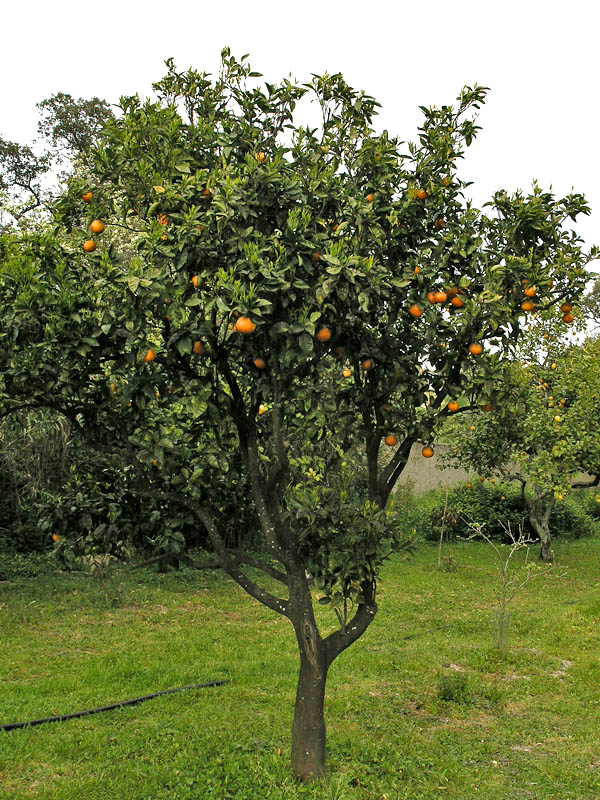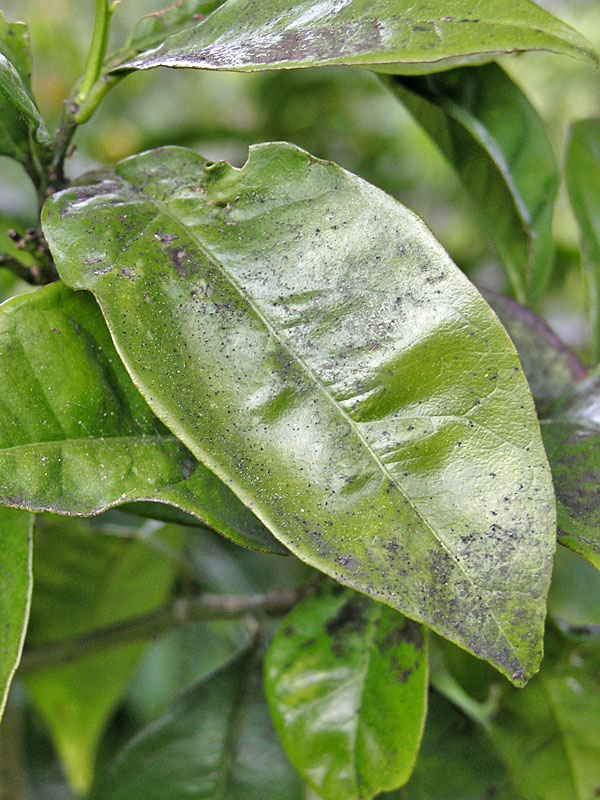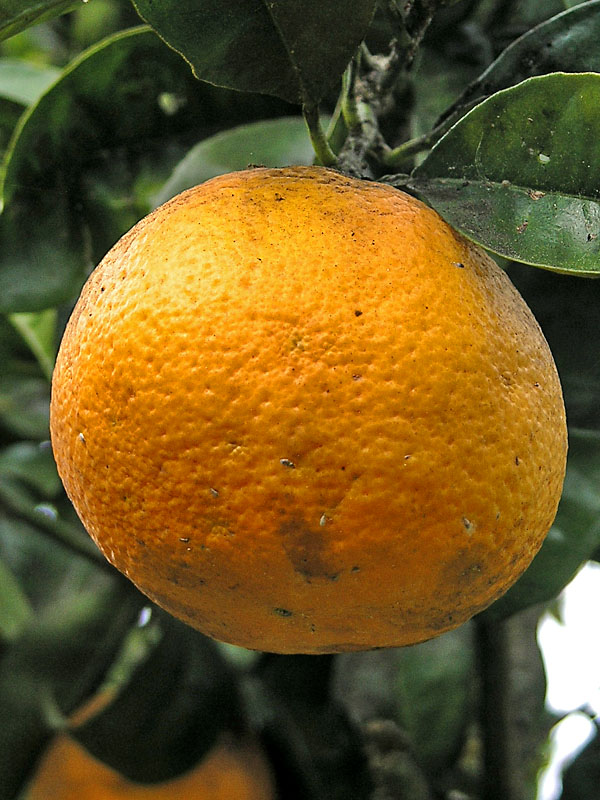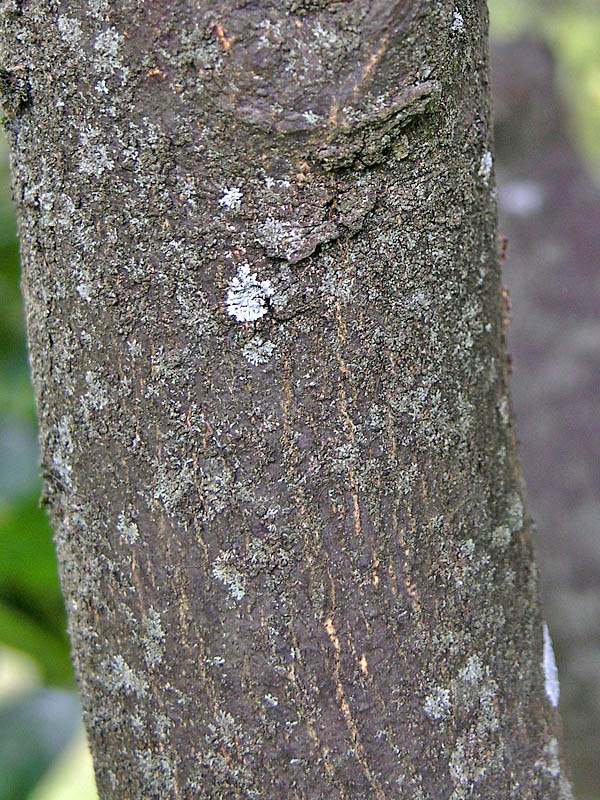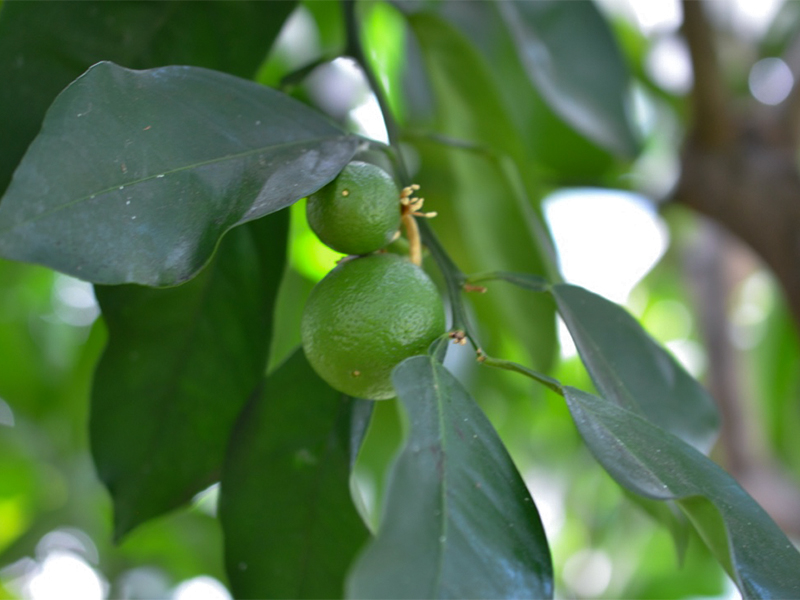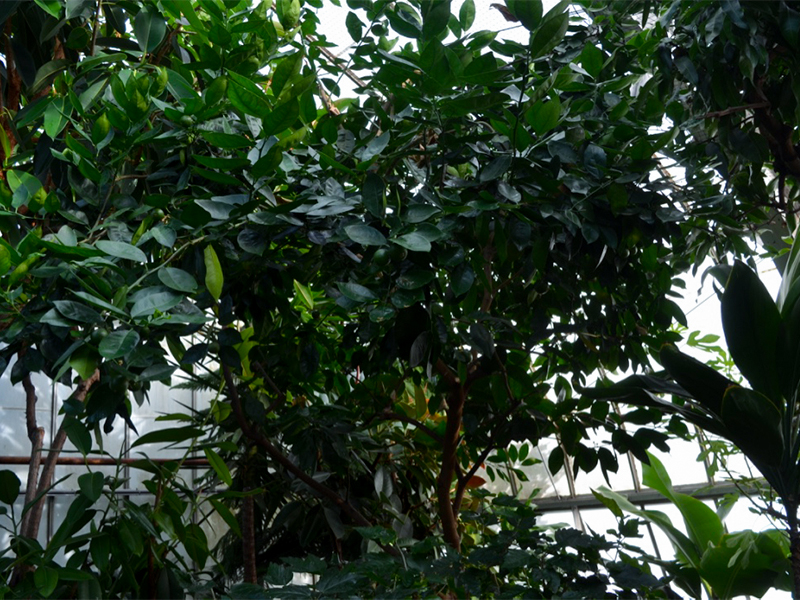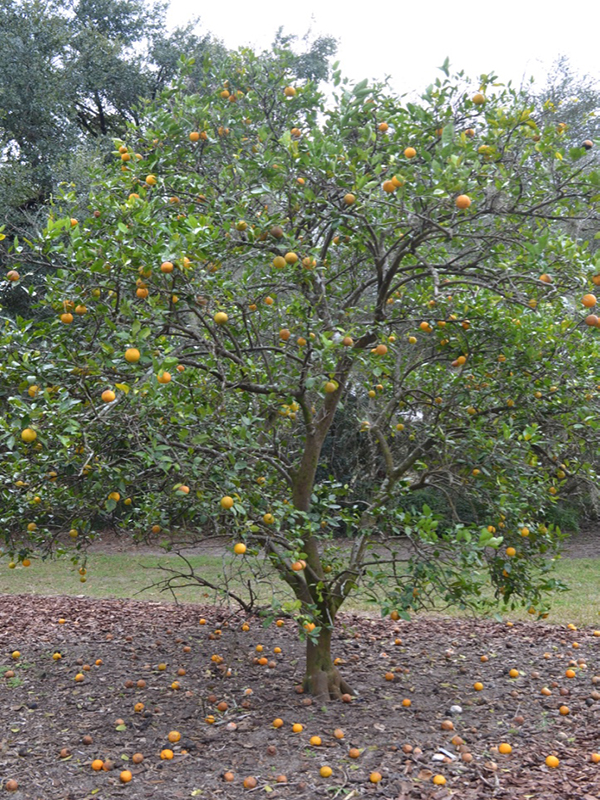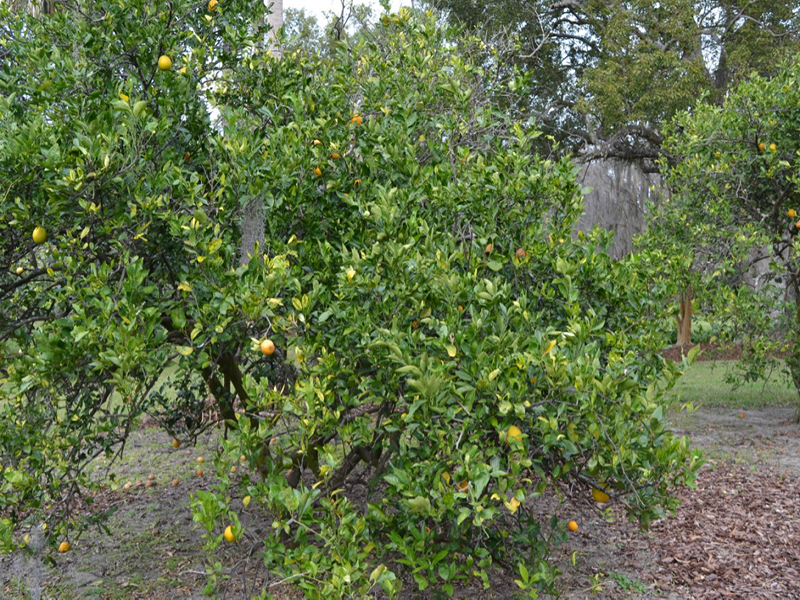
Tropicals, Woody > Citrus > Citrus sinensis > Citrus sinensis
Citrus sinensis
Sweet Orange
Origin: Southern China.
| Family |
| Rutaceae |
| Genus |
| Citrus |
| Species |
| sinensis |
| Category |
| Tropicals, Woody |
| Type |
| Tree (evergreen) |
| Synonyms |
| Citrus aurantium sinensis. |
| Pronunciation |
| USDA Hardiness Zone |
| 9 - 11 |
| Canadian Hardiness Zone |
| Requires cold season protection under glass. |
| RHS Hardiness Zone |
| H1c - H4 |
| Temperature (°C) |
| -10 - 10 |
| Temperature (°F) |
| 14 - 50 |
| Height |
| 7.5 - 15 m |
Photographs
Description and Growing Information
Flowering Period
| General Description |
| Medium sized tree that grows the world’s most popular fruit. |
| Cultivation |
| Grows best in full sun with well-drained medium to soil. Let soil dry between waterings. |
| Growth |
| Medium |
| Pests |
| Mediterranean fruit flies, fungal leaf spots, blights, aphids, sooty mold, root rot, and viruses. Xylella a bacterial disease is a serious threat to many horticultures crops due to its virulence and wide range of species it can infect. It can infect more than 560 species with wide ranging symptoms including leaf scorch, yellowing and scorching, wilt, branch and twig dieback and plant death. These symptoms can be identical to other symptoms such as drought and weather stress. Infected plants show symptoms within a few years after planting. |
| Leaf Description |
| Shape ranges from oblong to oval. 6.5 - 15 cm long and 2.5 - 9.5 cm wide, often with narrow wings on the petioles. |
| Flower Description |
| Fragrant, produced in clusters of up to 6, 5 cm wide, with 5 petals and 20 to 25 stamens. |
| Fruit Description |
| Shape is globose to oval and is 6.5 - 9.5 cm wide. Skin contains numerous small oil glands. The flesh is typically juicy and sweet, divided into 10 - 14 segments. |
| Colour Description |
| Flowers are white with yellow stamens. Fruit skin ripens to orange or yellow. Fruit flesh can be yellow, orange, or red. |
| Texture Description |
| Leaves are leathery and glossy. |
| Notable Specimens |
| Centennial Conservatory, Thunder Bay, Ontario, Canada. |
| Propagation |
| By seed. |
| Ethnobotanical Uses (Disclaimer) |
| Eaten fresh, used in juice and a variety of desserts. |
